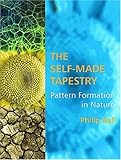The Self-Made Tapestry: Pattern Formation in Nature

価格: ¥0
カテゴリ: Kindle版
For centuries, scientists have struggled to understand the origins of the patterns and forms found in nature-from the leopards spots to the graceful spirals of a mollusc shell to the complex designs on a butterflys wing. Now, in this lucid and elegantly written book, Philip Ball applies state-of-the-art scientific understanding from the fields of biology, chemistry, geology, physics, and mathematics to these ancient mysteries, revealing how nature's seemingly complex patterns originate in simple physical laws.
Ball traces the history of scientific thought about natural patterns, showing how common presumptions-for example, that complex form must be guided by some intelligence or that form always follows function-are erroneous and continue to mislead scientists today. He investigates specific patterns in depth, revealing that these designs are self-organized and that simple, local interactions between component parts produce motifs like spots, stripes, branches, and honeycombs. In the process, he examines the mysterious phenomenon of symmetry and why it appears-and breaks-in similar ways in different systems. Finally, he attempts to answer this profound question: why are some patterns universal? Illustrations throughout the text, many in full color, beautifully illuminate Ball's ideas.
A fascination with nature,s patterns is as old as civilization. With this spellbinding book, Ball dispels age-old conundrums while increasing the readers wonder and appreciation for the beauty of the natural world. The Self-Made Tapestry will enlighten anyone who has ever marveled at the shape of a seashell or the brilliance of a spider's web.
Ball traces the history of scientific thought about natural patterns, showing how common presumptions-for example, that complex form must be guided by some intelligence or that form always follows function-are erroneous and continue to mislead scientists today. He investigates specific patterns in depth, revealing that these designs are self-organized and that simple, local interactions between component parts produce motifs like spots, stripes, branches, and honeycombs. In the process, he examines the mysterious phenomenon of symmetry and why it appears-and breaks-in similar ways in different systems. Finally, he attempts to answer this profound question: why are some patterns universal? Illustrations throughout the text, many in full color, beautifully illuminate Ball's ideas.
A fascination with nature,s patterns is as old as civilization. With this spellbinding book, Ball dispels age-old conundrums while increasing the readers wonder and appreciation for the beauty of the natural world. The Self-Made Tapestry will enlighten anyone who has ever marveled at the shape of a seashell or the brilliance of a spider's web.